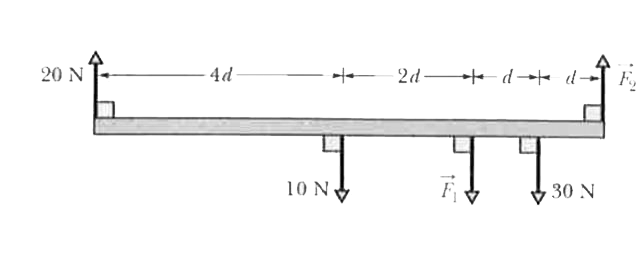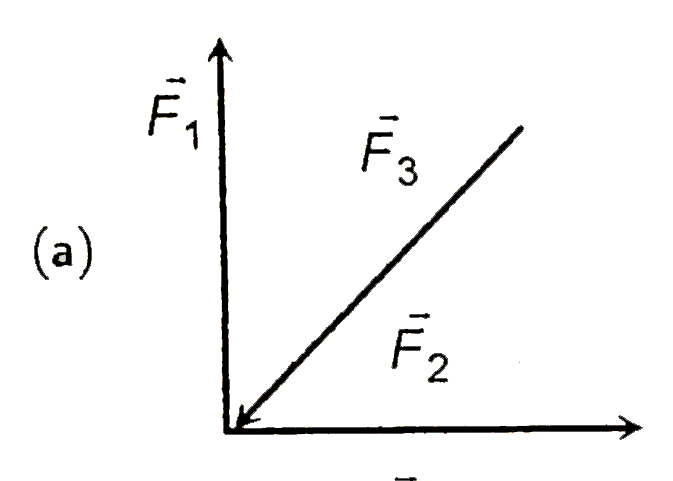The figure gives an overhead view of a uniform rod in static equi- librium. (a) Can you find the magnitudes of unknown forces →F1 and →F2 by balancing the forces? (b) If you wish to find the mag nitude of force →F2 by using a balance of torques equation, where should you place a rotation axis to eliminate →F1 from the equation? (c) The magnitude of →F2 turns out to be 65 N. What then is the magnitude of →F1?

In situation depicted in (c), in situation depicted in (e), in situation depicted in (f).
Topper's Solved these Questions
- BOOK - RESNICK AND HALLIDAYCHAPTER - RIGID BODY DYNAMICS-IIEXERCISE - PROBLEMS41videos
RIGID BODY DYNAMICS-II
- BOOK - RESNICK AND HALLIDAYCHAPTER - RIGID BODY DYNAMICS-IIEXERCISE - PRACTICE QUESTIONS28videos
RIGID BODY DYNAMICS-II
- BOOK - RESNICK AND HALLIDAYCHAPTER - RIGID BODY DYNAMICS-IIEXERCISE - EXAMPLE1videos
RIGID BODY DYNAMICS-II
- BOOK - RESNICK AND HALLIDAYCHAPTER - RIGID BODY DYNAMICS - IEXERCISE - PRACTICE QUESTIONS (INTEGER TYPE))3videos
RIGID BODY DYNAMICS - I
- BOOK - RESNICK AND HALLIDAYCHAPTER - TEMPERATURE, ZEROTH LAW OF THERMODYNAMICS AND THERMAL EXPANSION EXERCISE - PRACTICE QUETIONS (Integer Type)4videos
TEMPERATURE, ZEROTH LAW OF THERMODYNAMICS AND THERMAL EXPANSION
Similar Questions
Knowledge Check
- Question 1 - Select One
Two forces →F1and→F2 are acting at right angles to each other, find their resultant ?
A√F21+F22B√F21−F22CF1+F2DF1−F2 - Question 2 - Select One
The resultant of the forces →F1=4ˆi−3ˆj and →F2=6ˆi+8ˆj is
A5√5B10ˆi−5ˆjC125D−2ˆi−3ˆj - Question 3 - Select One
Which of the four arrangements in the figure correctly shows the vector addition of two forces →F1 and →F2 to yield the third force →F3
A B
B C
C D
D
The figure shows an overhead view of a meter stick that can pivot about the point indicated, which is to the left of the stick's midpoint. Two horizontal forces, →F1and→F2, are applied to the stick. Only →F1 is shown. Force →F2 is perpendicular to the stick and is applied at the right end. If the stick is not to turn, (a) what should be the direction of →F2, and (b) should F2 be greater than, less than, or equal to F1?
 View Solution
View SolutionTwo force vectors →F1 and→F2 , each of magnitude 10 N act at a point at an angle of 60°. The magnitude of resultant force vector is
View SolutionA body is under the action of three forces →F1,→F2and→F3. In which case the body cannot undergo angular acceleration ?
View SolutionA body is under the action of three forces →F1,→F2 and →F3. In which case the body cannot undergo angular acceleration ? .
View SolutionResultant of two forces →F1 and →F2 has magnitude 50 N. The resultant is inclined to →F1 at 60∘ and to →F1 at 30∘ . Magnitudes of →F1 and →F2, respectively, are:
View Solution

